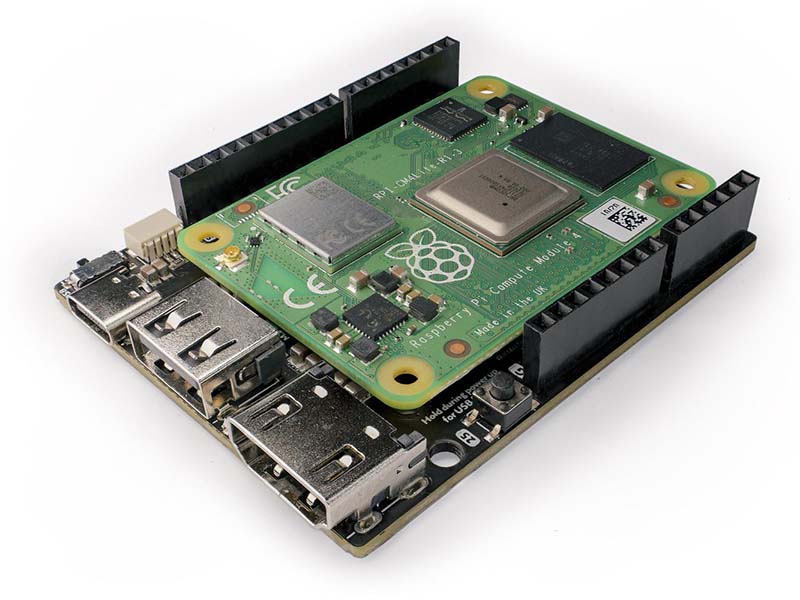Piunora
by Diodes Delight

Piunora is a compact, easy-to-use development board for electronics prototyping with Linux. It has a familiar form factor, legible pin labels, and a design that’s well suited to space-constrained applications.
As a carrier board for the Raspberry Pi Compute Module 4 (CM4), Piunora is essentially a tiny version of the Raspberry Pi 4 Single Board Computer (SBC) with added flexibility to accommodate custom form factors. CM4-based devices like Piunora are fully compatible with software that was written for the Raspberry Pi 4, as long as that software accounts for the hardware peripherals in use. There are also versions of the CM4 that include eMMC memory, which is more reliable than a traditional SD card.
It may be small, but Piunora is packed with powerful peripherals that will come in handy for rapid prototyping and embedded machine-learning applications. Examples include an HDMI port, camera-input connectors, and PCI-e support, which is not present on a standard Raspberry Pi 4. Finally, the M.2 B-Key port on the rear of the board is not only useful for SSD storage, it can also host a diverse range of PCI-e expansion boards.
Purchase
Contribute
Have some info to add for this board? Edit the source for this page here.
Adafruit Blinka Installation
We use a special library called adafruit_blinka (named after Blinka, the CircuitPython mascot) to provide the layer that translates the CircuitPython hardware API to whatever library the Linux board provides.
For example, on Raspberry Pi we use the python RPi.GPIO library. For any I2C interfacing we'll use ioctl messages to the /dev/i2c device. For SPI we'll use the spidev python library, etc. These details don't matter so much because they all happen underneath the adafruit_blinka layer.
